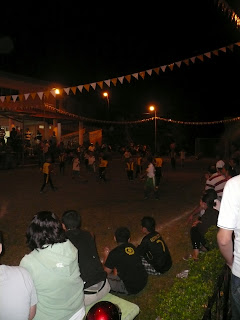Does my bum look big in this?
Aviarios sloth sanctuary takes in orphaned and injured sloths. Some have very sad stories, main problems they encounter are being attacked by dogs when they come to the ground to go to the toilet, falling out of trees, getting cold and wet in storms, developing problems related to pollution from banana plantation spraying, being taken by local people to show tourists at the roadside, being beaten and set on fire by children and lots are burned when they climb up electricity poles and onto cables.
Baby sloths are born after 11 months gestation, fully equiped and ready to go. The mother gives birth up a tree and the baby climbs straight up and spends the best part of the next year travelling round on the mother, learning what to eat. When orphaned sloths are brought to the sanctuary they are cared for by Judy the sloth whisperer but sadly for the sloths it is the opinion of those who run the sanctuary that they can`t go back to the wild as they have no mother to learn what to eat from. This has not really been properly studied yet. We really hope this work gets set in train soon and that things finally change so some can return to the wild, one big problem is that its almost impossible to watch what wild sloths eat. Last year they had a sloth with a radio collar on, they knew which tree it was in because of the signal and despite watching the tree intently for three days they could never see the sloth, nevermind what it was eating!
We start at 6am with cleaning out. Having swept up the crumbs from their platforms we then wipe them with a vinegar solution (the platforms not the sloths). Often the sloths make this a little more tricky by having a snooze on the platform you are trying to clean - you just have to clean around them.
What better way to relax after lunch than to fall asleep on your meal plate
Breakfast is stalks of berros and sometimes almond leaves.
Our first assignment was to make a sign promoting the online sloth adoptions for visitors to the sanctaury. Jessica is Canadian and came to the sanctuary at the same time as us.
Fiona gets out everyday to clear paths in the jungle
centipede
Another volunteer here called Jay was an entomologist and was always on the hunt for stuff to kill and pin
Jay wanted to see a rhinoceros beetle more than anything, when he left I said I bet we see one the day after you leave. I was wrong it was two days after he left.
The three toed sloths have so much character
There are one or two that try and help when you are cleaning out the cage by hanging onto you. This is Sidwiggy, named after a combination of Sid the Sloth from the film Ice Age (which even you`ve seen Dad) and apparently his rescuers named him in spanish `little girl wearing a wig` which is where the wig bit comes from!
Yum- breakfast of cecropia leaves
Not everyone is as enthusiastic about lunch
Fiona and Jessica on the boat. It was great to have access to the canoes, we often went out at night and saw kinkajous, caimen, bats, crabs and millions of mozzies.
the leaves on the water looked much prettier than this photo makes it look
hmmmm............Ralph wanted a haircut that he couldn't have at work meetings
This wild male was attracted to the sanctuary by the sounds of the captive females - this is what it sounds like
The captive sloths are in the enclosure behind the tree with the wild sloth in
Claire is responsible for the babies. Every morning after breakfast we got an opportunity to either take a baby sloth to the jungle gym, or walk an adult Bradypus (Three toed) around the garden.
Luigi a baby two toed Choloepus
Shilo another two toed baby - he has very different colours
much cuteness
This one is called Velcro
We take the babies out to practice climbing on a jungle gym (this haircut was meant to be as a joke). You have to take a teddy bear (Stuffy if you are American) out with each sloth as when some of them run into one another on the gym you have to intervene with a teddy otherwise they will bite one another (if they are room mates you don't need to as they will happily crawl over each other). Here is Ralph intervening!
Occasionally one of the babies might descend the jungle gym for a toilet stop
having a poo takes a lot of concentration.
feeding time for the sloth babies


















































































